Structural, Electrical, Magnetic and Resistive Switching Properties of the Multiferroic/Ferroelectric Bilayer Thin Films
Abstract
:1. Introduction
2. Material and Methods
3. Results and Discussion
4. Conclusions
Acknowledgments
Author Contributions
Conflicts of Interest
References
- Liu, J.; Li, M.; Pei, L.; Wang, J.; Yu, B.; Wang, X.; Zhao, X. Structural and multiferroic properties of the Ce-doped BiFeO3 thin films. J. Alloys Compd. 2010, 493, 544–548. [Google Scholar] [CrossRef]
- Levin, I.; Karimi, S.; Provenzano, V.; Dennis, C.; Wu, L.H. Reorientation of magnetic dipoles at the antiferroelectric-paraelectric phase transition of Bi1−xNdxFeO3 (0.15 ≤ x ≤ 0.25). Phys. Rev. B 2010, 81, 202103. [Google Scholar] [CrossRef]
- Eerentstein, W.; Mathur, N.D.; Scott, J.F. Multiferroic and magnetoelectric materials. Nature 2006, 442, 759–765. [Google Scholar] [CrossRef] [PubMed]
- Tokura, Y. Multiferroics—Toward strong coupling between magnetization and polarization in a solid. J. Magn. Magn. Mater. 2007, 310, 1145–1150. [Google Scholar] [CrossRef]
- Cheong, S.W.; Mostovoy, M. Multiferroics: A magnetic twist for ferroelectricity. Nat. Mater. 2007, 6, 13–20. [Google Scholar] [CrossRef] [PubMed]
- Kim, K.M.; Jeong, D.S.; Hwang, C.S. Nanofilamentary resistive switching in binary oxide system; a review on the present status and outlook. Nanotechnology 2011, 22, 254002. [Google Scholar] [CrossRef] [PubMed]
- Long, S.; Lian, X.; Cagli, C.; Cartoixà, X.; Rurali, R.; Miranda, E.; Jiménez, D.; Perniola, L.; Liu, M.; Suñé, J. Quantum-size effects in hafnium-oxide resistive switching. Appl. Phys. Lett. 2013, 102, 183505. [Google Scholar] [CrossRef] [Green Version]
- Miranda, E.; Walczyk, C.; Wenger, C.; Schroeder, T. Model for the resistive switching effect in HfO2 MIM structures based on the transmission properties of narrow constrictions. IEEE Electron Dev. Lett. 2010, 31, 609–611. [Google Scholar] [CrossRef]
- Hwang, J.S.; Cho, J.Y.; Park, S.Y.; Yoo, Y.J.; Yoo, P.S.; Lee, B.W.; Lee, Y.P. Multiferroic properties of stretchable BiFeO3 nano-composite film. Appl. Phys. Lett. 2015, 106, 062902. [Google Scholar] [CrossRef]
- Perez-Rivero, A.; Ricote, J.; Bretos, I.; Garcıa-Hernandez, M.; Calzada, M.L.; Jim, R. Enhanced ferroelectric and ferromagnetic properties in lead-free multilayer composite films based on ferroelectric (Bi0.5Na0.5)0.945Ba0.055TiO3 and multiferroic BiFeO3. J. Appl. Phys. 2015, 117, 064105. [Google Scholar] [CrossRef]
- Xu, Q.; Sheng, Y.; He, M.; Qiu, X.; Du, J. The multiferroic properties of BiFe0.5Mn0.5O3 and BiFeO3/BiMnO3 superlattice films. J. Appl. Phys. 2015, 117, 17D911. [Google Scholar] [CrossRef]
- Ramesh, R.; Spaldin, N.A. Multiferroics: Progress and prospects in thin films. Nat. Mater. 2007, 6, 21–29. [Google Scholar] [CrossRef] [PubMed]
- Ederer, C.; Spaldin, N.A. Effect of Epitaxial Strain on the Spontaneous Polarization of Thin Film Ferroelectrics. Phys. Rev. Lett. 2005, 95, 2576014–2576019. [Google Scholar] [CrossRef] [PubMed]
- Kumar, P.; Kar, M. Effect of structural transition on magnetic and optical properties of Ca and Ti co-substituted BiFeO3 ceramics. J. Alloys Compd. 2014, 584, 566–572. [Google Scholar] [CrossRef]
- Wang, K.F.; Liu, J.M.; Ren, Z.F. Multiferroicity: The coupling between magnetic and polarization orders. Adv. Phys. 2009, 58, 321–448. [Google Scholar] [CrossRef]
- Palai, R.; Katiyar, R.S. βphase and γ−β metal-insulator transition in multiferroic BiFeO3. Phys. Rev. B 2008, 77, 0141100. [Google Scholar] [CrossRef]
- Neaton, J.B.; Ederer, C.; Waghmare, U.V.; Spaldin, N.A.; Rabe, K.M. First-principles study of spontaneous polarization in multiferroic BiFeO3. Phys. Rev. B 2005, 71, 014113. [Google Scholar] [CrossRef]
- Savita, S.; Monika, T.; Ashok, K.; Nitin, K.P.; Vinay, G. Enhanced ferroelectric photovoltaic response of BiFeO3/BaTiO3 multilayered structure. J. Appl. Phys. 2015, 118, 074103. [Google Scholar]
- Iorgu, A.I.; Maxim, F.; Matei, C.; Liliana, P.F.; Ferreira, P.; Cruz, M.M.; Berger, D. Fast synthesis of rare-earth (Pr3+, Sm3+, Eu3+ and Gd3+) doped bismuth ferrite powders with enhanced magnetic properties. J. Alloys Compd. 2015, 629, 62–68. [Google Scholar] [CrossRef]
- Troyanchuk, I.O.; Karpinsky, D.V.; Bushinsky, M.V.; Khomchenko, V.A. Isothermal structural transitions, magnetization and large piezoelectric response in Bi1−xLaxFeO3 perovskites. Phys. Rev. B 2011, 83, 054109–054111. [Google Scholar] [CrossRef]
- Rusakov, D.A.; Abakumov, A.M.; Yamaura, K.; Belik, A.A. Structural Evolution of the BiFeO3−LaFeO3 System. Chem. Mater. 2011, 23, 285–292. [Google Scholar] [CrossRef]
- Cummins, S.E.; Cross, L.E. Electrical and optical properties of ferroelectric Bi4Ti3O12 single crystals. J. Appl. Phys. 1968, 39, 2268–2274. [Google Scholar] [CrossRef]
- Kao, M.C.; Chen, H.Z.; Young, S.L.; Kao, M.H. Structural, ferroelectric and leakage current properties of Bi3.96Pr0.04Ti2.95Nb0.05O12 thin films. Thin Solid Films 2014, 570, 543–546. [Google Scholar] [CrossRef]
- Hong, Z.; Wu, G.; Qin, N.; Bao, D. Dual Enhancement of Photoluminescence and Ferroelectric Polarization in Pr3+/La3+-Codoped Bismuth Titanate Thin Films. J. Am. Ceram. Soc. 2010, 93, 2109–2112. [Google Scholar]
- Yan, L.; Xing, Z.; Wang, Z.; Wang, T.; Lei, G.; Li, J.; Vieh, D. Direct measurement of magnetoelectric exchange in self-assembled epitaxial BiFeO3–CoFe2O4 nanocomposite thin films. Appl. Phys. Lett. 2009, 94, 192902. [Google Scholar] [CrossRef]
- Wang, Z.; Zhang, Y.; Wang, Y.; Li, Y.; Luo, H.; Li, J.; Vieh, D. Magnetoelectric Assisted 180° Magnetization Switching for Electric Field Addressable Writing in Magnetoresistive Random-Access Memory. ACS Nano 2014, 8, 7793–7800. [Google Scholar] [CrossRef] [PubMed]
- Wang, Z.; Wang, X.; Li, M.; Gao, Y.; Hu, Z.; Nan, T.; Liang, X.; Chen, H.; Yang, J.; Cash, S.; et al. Highly Sensitive Flexible Magnetic Sensor Based on Anisotropic Magnetoresistance Effect. Adv. Mater. 2016, 28, 9370–9377. [Google Scholar] [CrossRef] [PubMed]
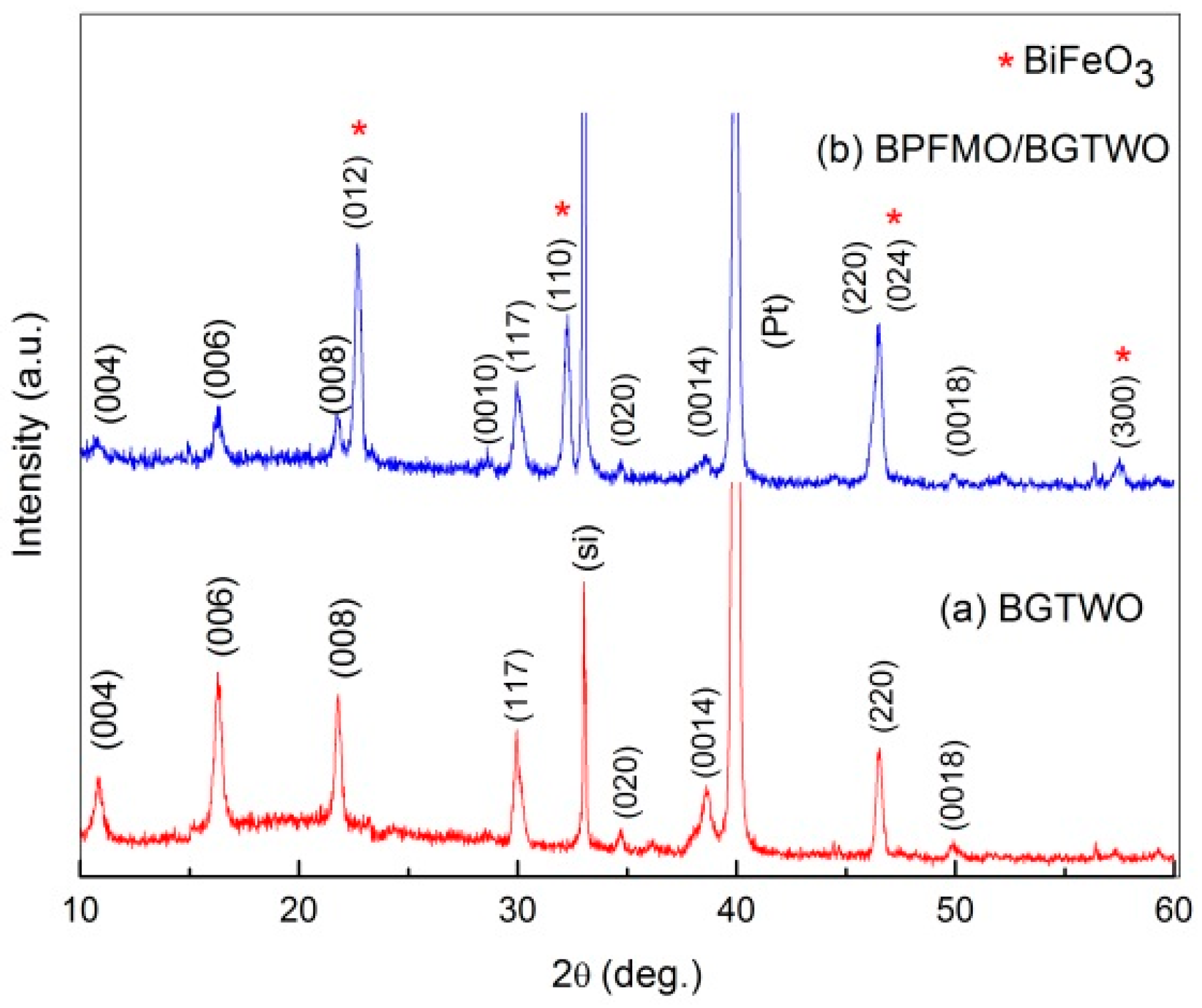
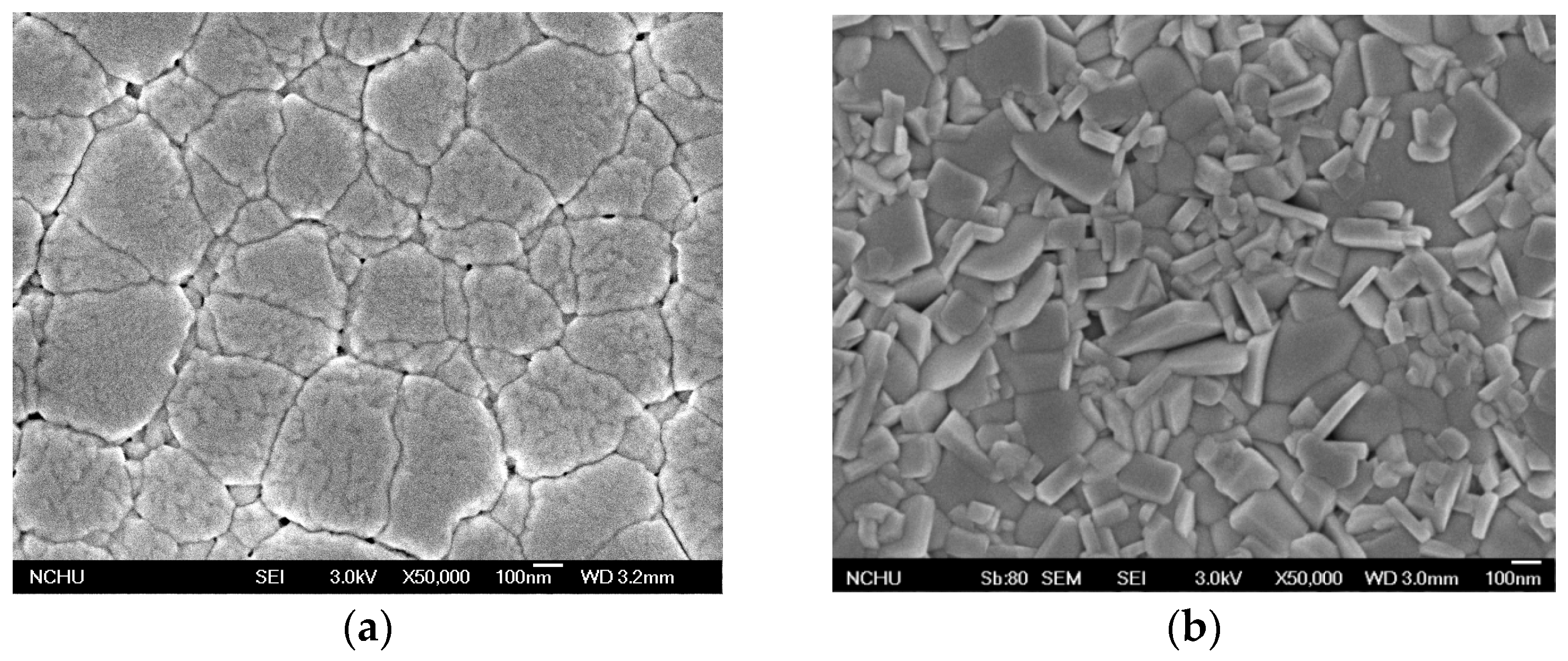
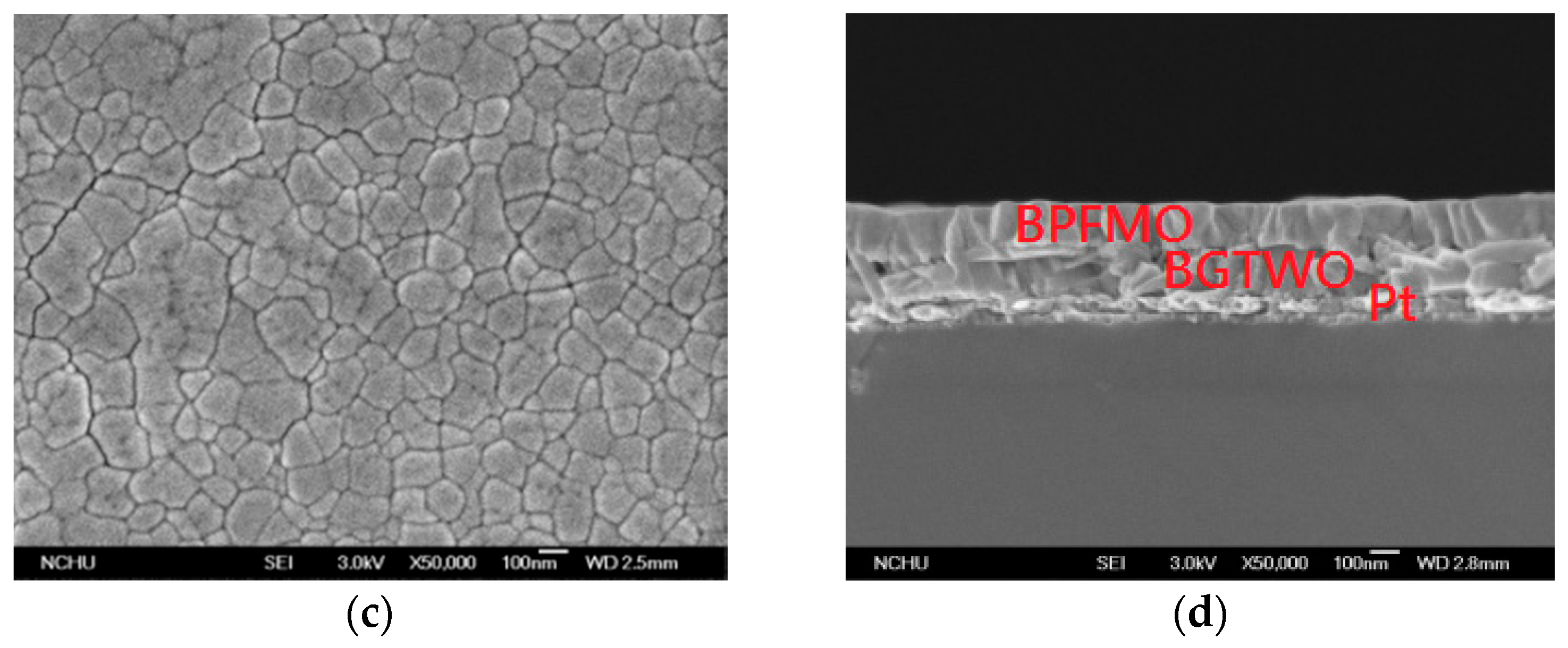
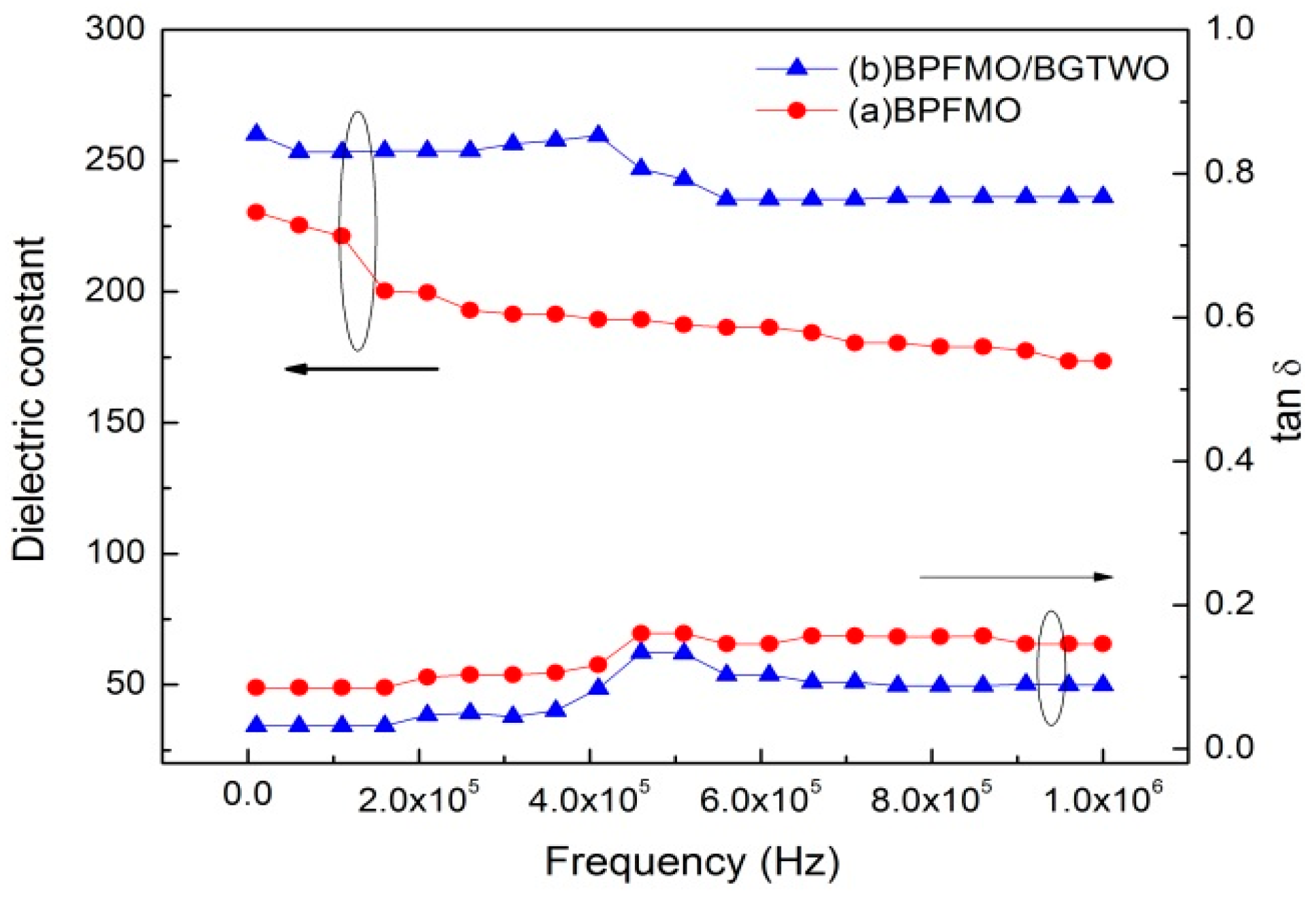
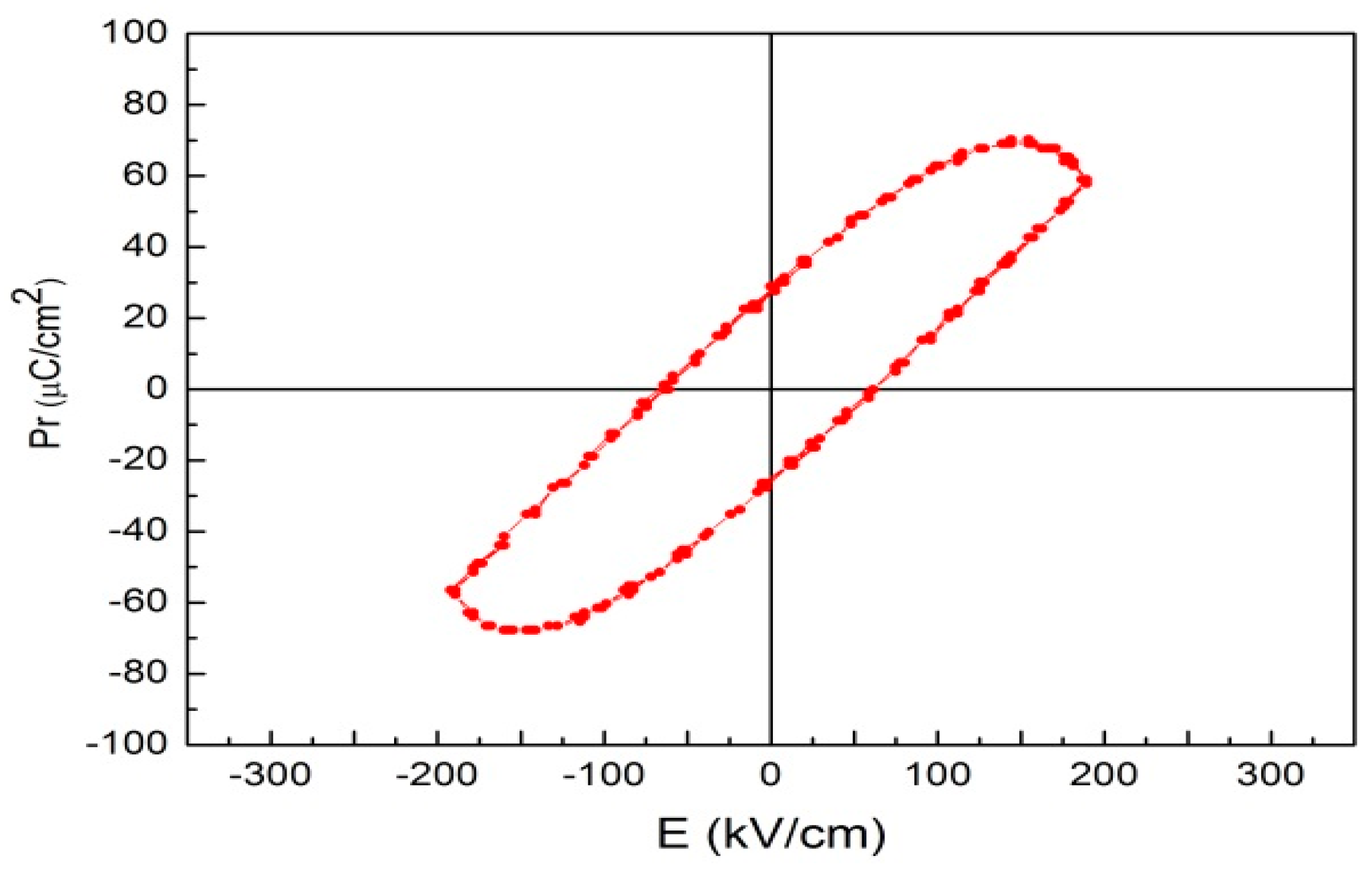
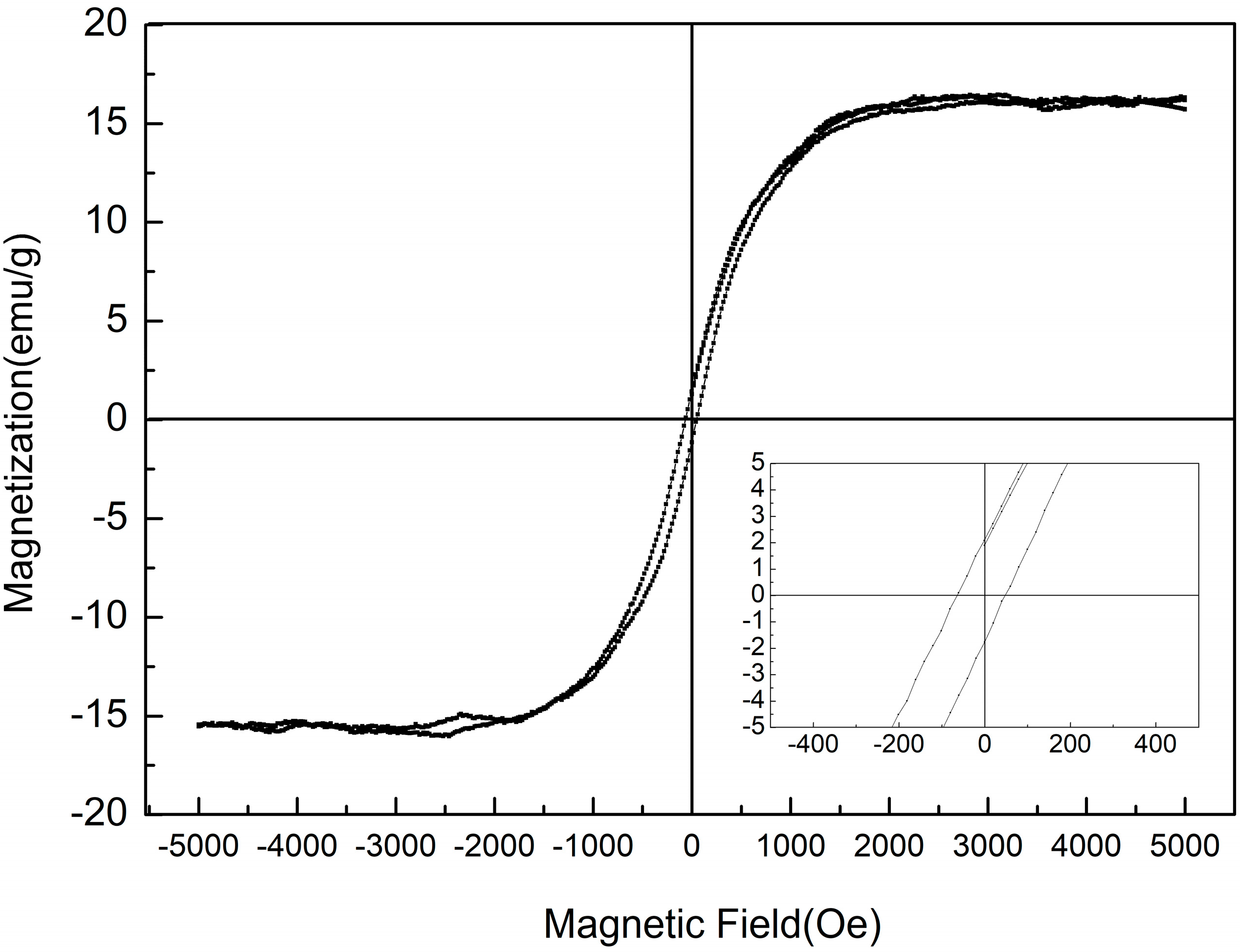
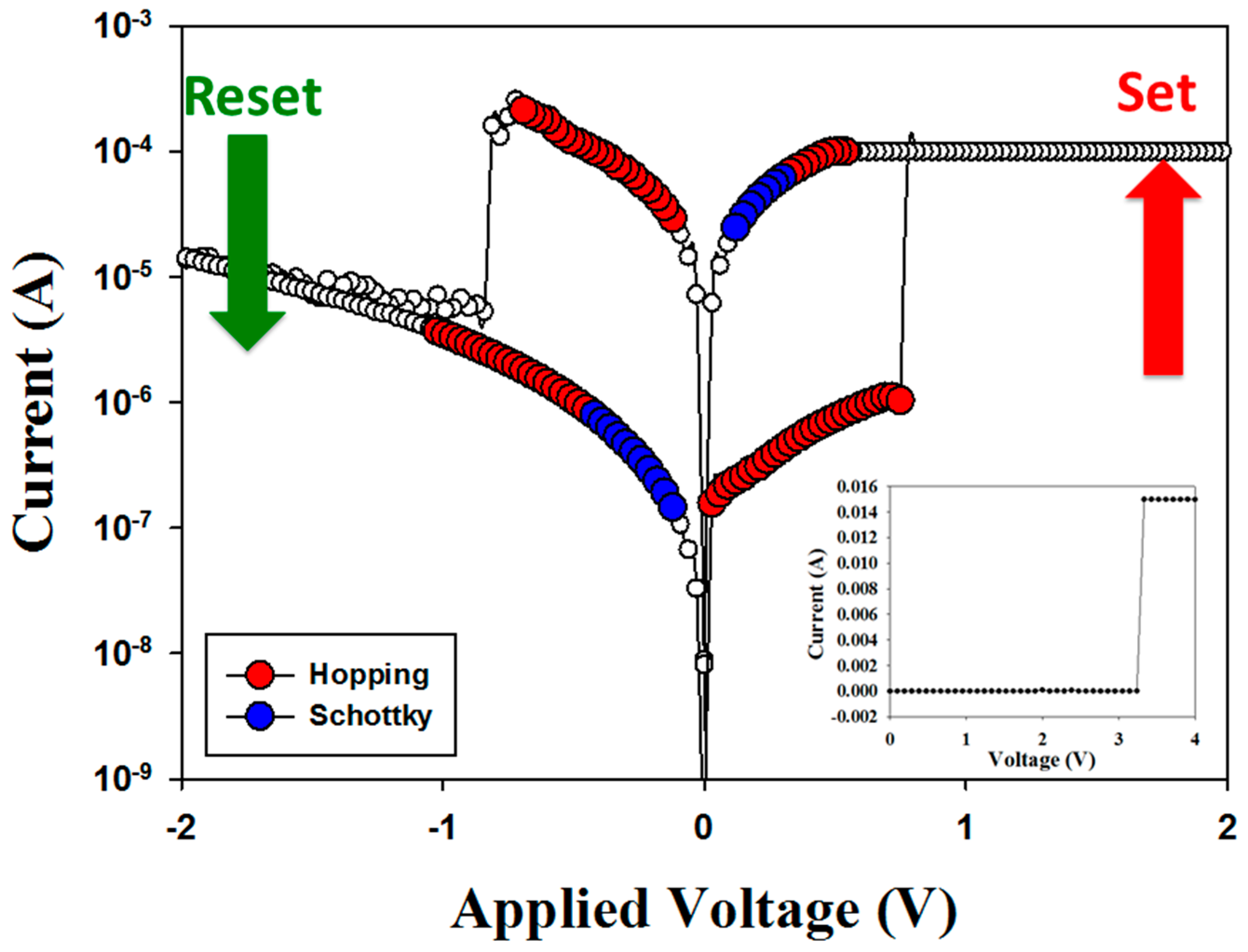
© 2017 by the authors. Licensee MDPI, Basel, Switzerland. This article is an open access article distributed under the terms and conditions of the Creative Commons Attribution (CC BY) license (http://creativecommons.org/licenses/by/4.0/).
Share and Cite
Kao, M.-C.; Chen, H.-Z.; Young, S.-L.; Chen, K.-H.; Chiang, J.-L.; Shi, J.-B. Structural, Electrical, Magnetic and Resistive Switching Properties of the Multiferroic/Ferroelectric Bilayer Thin Films. Materials 2017, 10, 1327. https://doi.org/10.3390/ma10111327
Kao M-C, Chen H-Z, Young S-L, Chen K-H, Chiang J-L, Shi J-B. Structural, Electrical, Magnetic and Resistive Switching Properties of the Multiferroic/Ferroelectric Bilayer Thin Films. Materials. 2017; 10(11):1327. https://doi.org/10.3390/ma10111327
Chicago/Turabian StyleKao, Ming-Cheng, Hone-Zern Chen, San-Lin Young, Kai-Huang Chen, Jung-Lung Chiang, and Jen-Bin Shi. 2017. "Structural, Electrical, Magnetic and Resistive Switching Properties of the Multiferroic/Ferroelectric Bilayer Thin Films" Materials 10, no. 11: 1327. https://doi.org/10.3390/ma10111327




